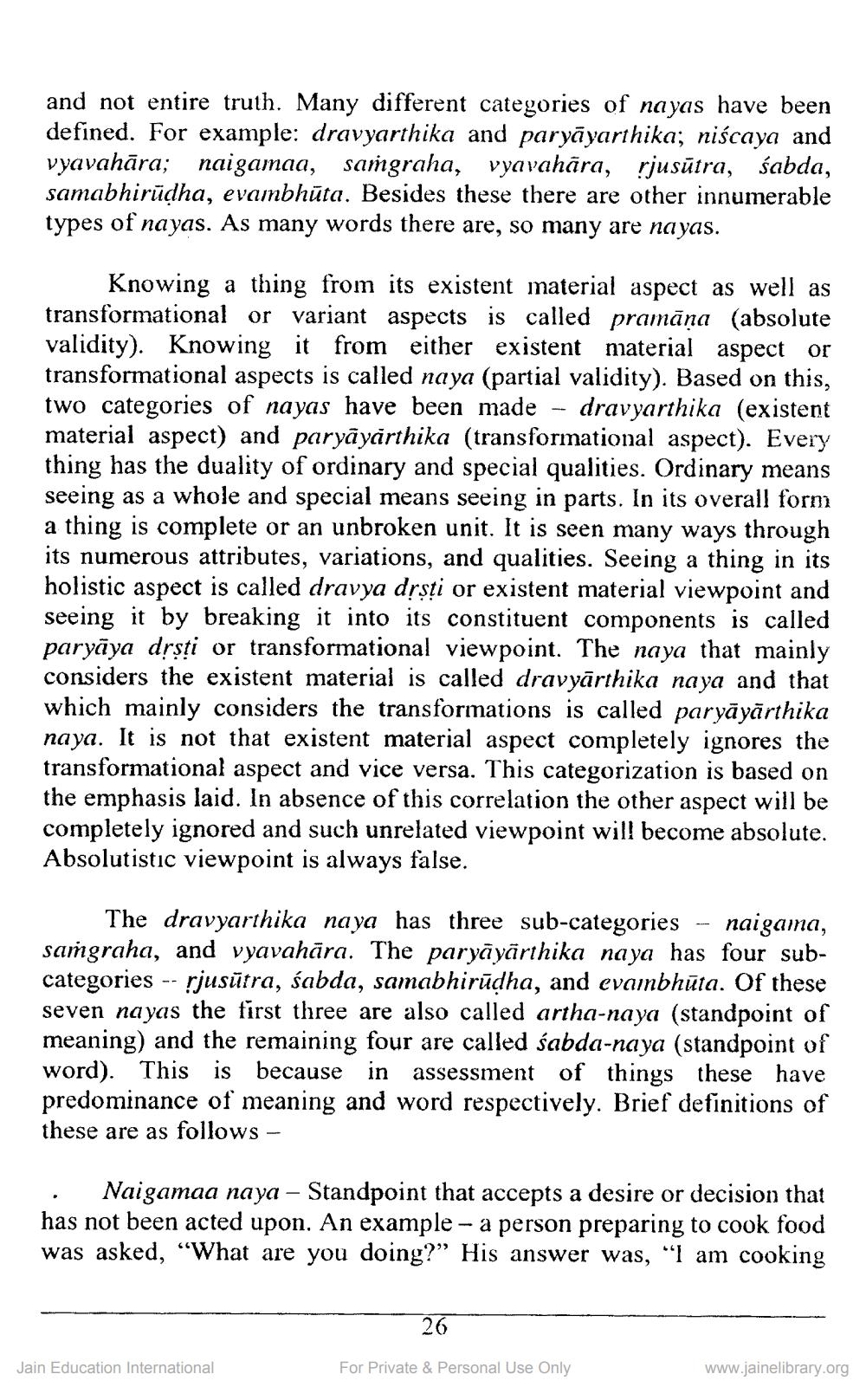________________
and not entire truth. Many different categories of nayas have been defined. For example: dravyarthika and paryāyarthika, niscaya and vyavahāra; naigamaa, samgraha, vyavahāra, rjusūtra, sabda, samabhirūḍha, evambhūta. Besides these there are other innumerable types of nayas. As many words there are, so many are nayas.
Knowing a thing from its existent material aspect as well as transformational or variant aspects is called pramāna (absolute validity). Knowing it from either existent material aspect or transformational aspects is called naya (partial validity). Based on this, two categories of nayas have been made dravyarthika (existent material aspect) and paryayarthika (transformational aspect). Every thing has the duality of ordinary and special qualities. Ordinary means seeing as a whole and special means seeing in parts. In its overall form a thing is complete or an unbroken unit. It is seen many ways through its numerous attributes, variations, and qualities. Seeing a thing in its holistic aspect is called dravya dṛṣṭi or existent material viewpoint and seeing it by breaking it into its constituent components is called paryaya dṛṣṭi or transformational viewpoint. The naya that mainly considers the existent material is called dravyārthika naya and that which mainly considers the transformations is called paryāyārthika naya. It is not that existent material aspect completely ignores the transformational aspect and vice versa. This categorization is based on the emphasis laid. In absence of this correlation the other aspect will be completely ignored and such unrelated viewpoint will become absolute. Absolutistic viewpoint is always false.
The dravyarthika naya has three sub-categories naigama, samgraha, and vyavahāra. The paryayarthika naya has four subcategories -- ṛjusūtra, śabda, samabhirūḍha, and evambhūta. Of these seven nayas the first three are also called artha-naya (standpoint of meaning) and the remaining four are called sabda-naya (standpoint of word). This is because in assessment of things these have predominance of meaning and word respectively. Brief definitions of these are as follows -
Naigamaa naya - Standpoint that accepts a desire or decision that has not been acted upon. An example - a person preparing to cook food was asked, "What are you doing?" His answer was, "I am cooking
Jain Education International
26
For Private & Personal Use Only
www.jainelibrary.org




